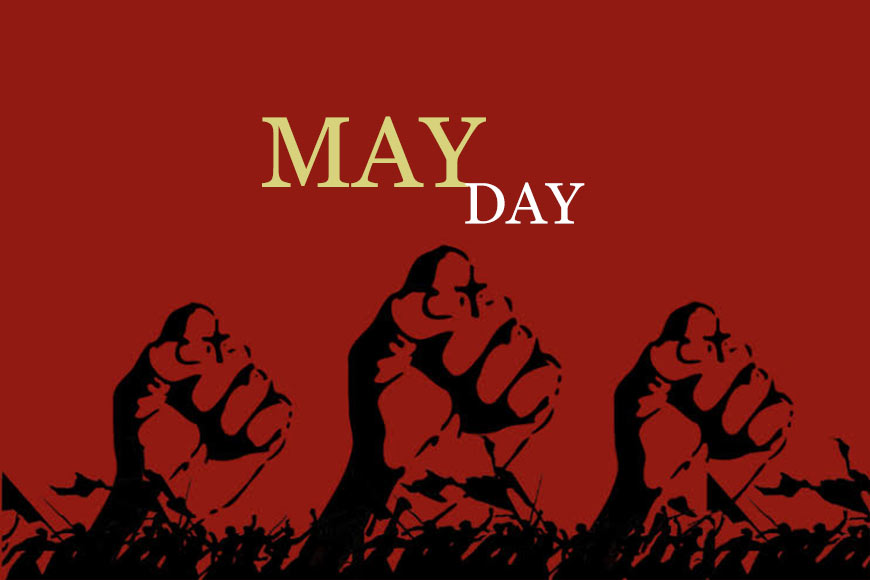Why do Bengal has a troubled relationship with May day?

When we say May Day, what we mean is International Workers’ Day, which is the day we have come to know. If you simply say May Day, you may also be talking about a pagan (non-Christian) celebration originally called Floralia in honour of Flora, the Roman goddess of flowers. In the era of the Roman Republic, the festival lasted seven days from the end of April. Simultaneously, every three years, the month of May saw the celebration of the Maiouma or Maiuma, a festival honouring the Greek deities Dionysus and Aphrodite, and apparently so named because it is celebrated in the month of May-Artemisios.
So how did a day of pagan festivities become associated with the workers’ movement? Throughout Europe, the month of May was the time for traditional pagan spring-summer festivals, but the May Day that we know is International Workers’ Day, also known as Labour Day in many countries, but often referred to as May Day. The date was chosen in 1889 by the Marxist International Socialist Congress, which met in Paris and established the Second International as a successor to the earlier International Workingmen’s Association.
Despite the importance of May Day in Bengal and Kolkata during the Communist regime, it was the apparent attempts by the Leftists to uphold the rights of workers that caused the complete breakdown of the state’s industrial sector.
A resolution was adopted for a “great international demonstration” in support of American workers’ demands for an eight-hour working day. The date had been chosen by the American Federation of Labor to continue an earlier campaign for the eight-hour day in the United States, which had ended in the Haymarket massacre of Chicago on May 4, 1886, resulting in the deaths of at least 11 people, seven of them policemen.
The incident caught the world’s attention and, following a court trial, eight so called ‘anarchists’ were convicted of conspiracy, seven being sentenced to death and one to 15 years in prison. Later, two of the sentences were commuted to life imprisonment, one convict died by suicide in jail rather than face the noose, and the remaining four were hanged on November 11, 1887.
Ironically, therefore, it was the United States, a country traditionally associated with a Capitalist economy, which was the birthplace of a workers’ movement which was later all but appropriated by Socialist and Communist ideologues. In India, the first May Day was observed in Chennai in 1923, but perhaps no other city accorded it as much importance as Kolkata, a Communist bastion for over three decades.
Which brings us to our second irony. Despite the importance of May Day in Bengal and Kolkata during the Communist regime, it was the apparent attempts by the Leftists to uphold the rights of workers that caused the complete breakdown of the state’s industrial sector. Whether workers’ rights were truly upheld remains in doubt, but what cannot be doubted is that in those 34 years, more industrial units shut down in Bengal than at any other time, leaving thousands jobless and families on the brink of starvation.
For those who grew up in Bengal between the 1960s and 1990s, phrases such as ‘lockout’, ‘strike’, and ‘union’ were part and parcel of life, with red flags fluttering at the gates of every second industrial unit, including its innumerable jute mills, signalling prolonged lockouts.

For those who grew up in Bengal between the 1960s and 1990s, phrases such as ‘lockout’, ‘strike’, and ‘union’ were part and parcel of life, with red flags fluttering at the gates of every second industrial unit, including its innumerable jute mills, signalling prolonged lockouts. As one industrial giant after another left the state, the stage was set for ‘brain drain’, the mass migration of bright young Bengalis to greener pastures in India and abroad in search of employment, abandoning a state that was once the industrial hub of India.
The perception of Bengal that those troubled decades created continues to this day, painting a picture of a stagnant work culture, a state hostile to industry, and problems caused by workers’ unions, many of them following the Leftist ideology. Again ironically, apparently work-shy Bengalis tend to be enormously successful in their chosen professions outside of Bengal. Clearly, the problem lies not with the workforce, but the perception of the state to which they belong.
As yet another May Day rolls around, one wonders if Bengal will ever overcome this perception and reclaim its industrial glory days, because without workers, what use is an international day in their honour?










